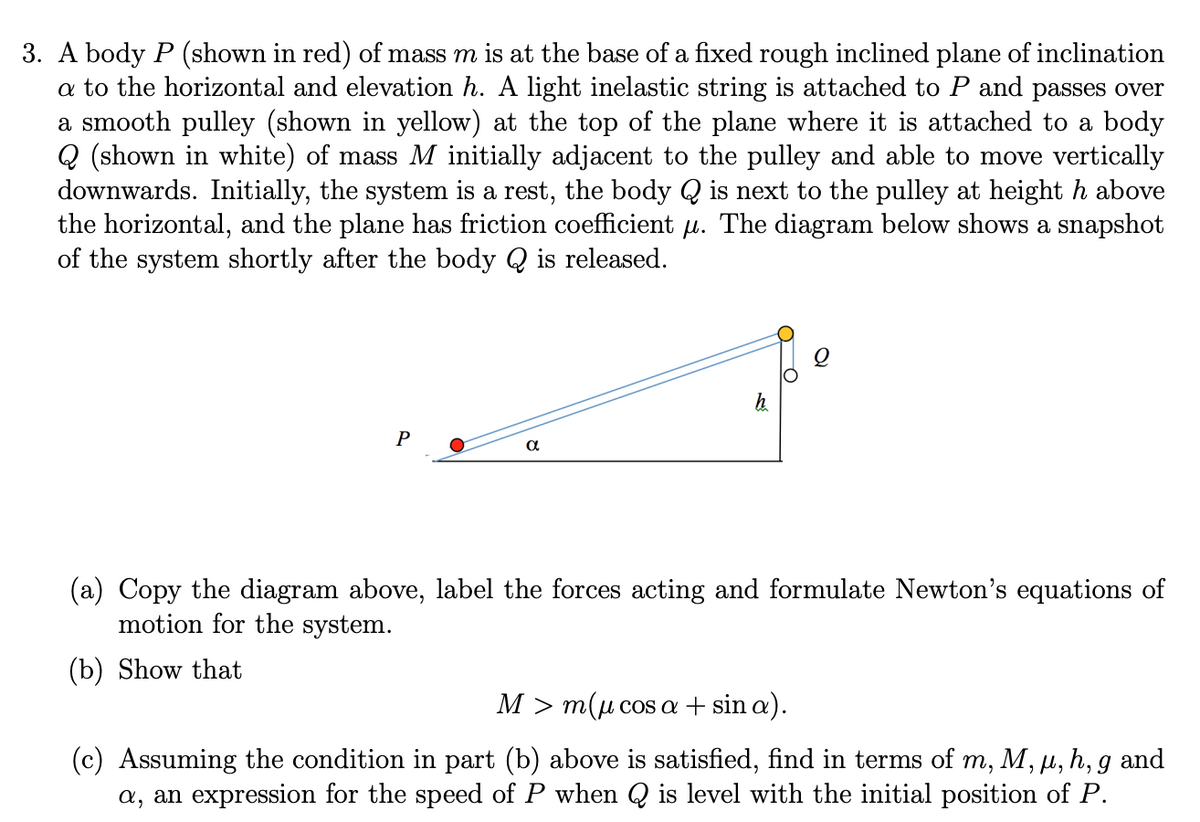3. A body P (shown in red) of mass m is at the base of a fixed rough inclined plane of inclination a to the horizontal and elevation h. A light inelastic string is attached to P and passes over a smooth pulley (shown in yellow) at the top of the plane where it is attached to a body Q (shown in white) of mass M initially adjacent to the pulley and able to move vertically downwards. Initially, the system is a rest, the body Q is next to the pulley at height h above the horizontal, and the plane has friction coefficient u. The diagram below shows a snapshot of the system shortly after the body Q is released. P (a) Copy the diagram above, label the forces acting and formulate Newton's equations of motion for the system. (b) Show that M > m(µ cos a + sin a). (c) Assuming the condition in part (b) above is satisfied, find in terms of m, M, H, h, g and a, an expression for the speed of P when Q is level with the initial position of P.
A body P (shown in red) of mass m is at the base of a fixed rough inclined plane of inclination α to the horizontal and elevation h. A light inelastic string is attached to P and passes over a smooth pulley (shown in yellow) at the top of the plane where it is attached to a body Q (shown in white) of mass M initially adjacent to the pulley and able to move vertically downwards. Initially, the system is a rest, the body Q is next to the pulley at height h above the horizontal, and the plane has friction coefficient µ. The diagram below shows a snapshot of the system shortly after the body Q is released.
Copy the diagram above, label the forces acting and formulate Newton’s equations of motion for the system. (b) Show that M > m(µ cos α + sin α). (c) Assuming the condition in part (b) above is satisfied, find in terms of m, M, µ, h, g and α, an expression for the speed of P when Q is level with the initial position of P.

Step by step
Solved in 4 steps with 1 images


